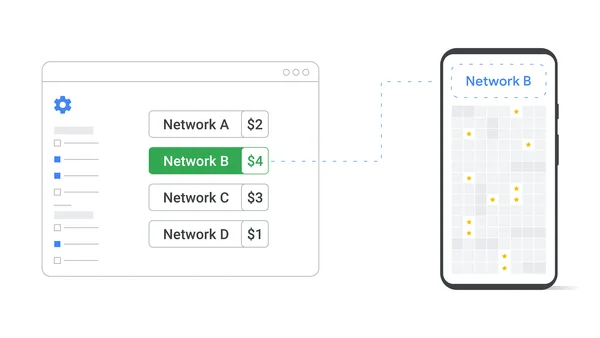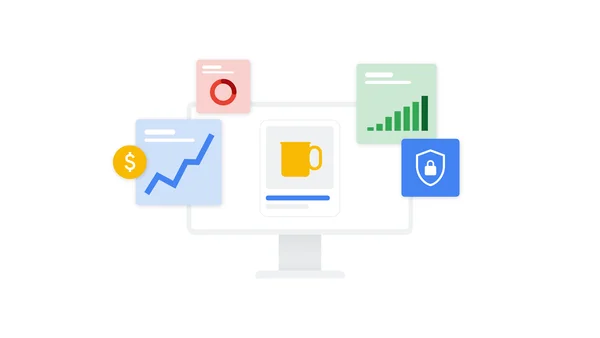Diving Deep Into Technical SEO for Ecommerce (My Takeaways)
As of 2023, there are over 26.5 million ecommerce websites around the world. Talk about a competitive industry.
As of 2023, there are over 26.5 million ecommerce websites around the world. Talk about a competitive industry.
It’s hard not to be intimidated by the sheer number of ecommerce sites shoppers have to choose from, especially since I’m in the process of launching my own ecommerce business — a vintage home goods store.
The home goods industry is certainly a crowded space, so I know how important it is to get my site’s technical SEO right if I want a chance at showing up in search results to get in front of shoppers.
To make sure I get my SEO right, I spoke to a few experts to find out which technical SEO elements my ecommerce site must have. Below, I’ll also walk through some examples of websites that get technical SEO right. Let’s dive in.
Table of Contents
- Getting Technical SEO Right in Ecommerce
- Ecommerce Sites That Get Technical SEO Right
- What I Learned About Technical SEO
Getting Technical SEO Right in Ecommerce
There are several technical SEO elements needed for an ecommerce business to thrive. These are the steps to follow if you want to get it right, according to a couple of ecommerce experts I talked to.
Set up site architecture.
The way your site is set up in the back end is just as important as how it looks to shoppers. This means your pages should have a clear structure and be easy for shoppers to navigate.
Successful website architecture begins with creating a user-friendly navigation menu and limiting the number of pages visitors have to click through to get the information they need.
Here’s an example of a simple and clear website architecture.
“Pages should have a clear structure,” suggests James Taylor, SEO strategist at Embryo. “Reduce the amount of clicks required between the home page and checkout.”
In the case of an ecommerce website, your page structure should make it quick and easy for people to browse and purchase your products.
“Not only is clear site structure important for user experience,” adds Taylor, “but the structure of a website can also influence the success of how a search engine crawls and ultimately indexes your site.”
Pro tip: If you want to improve your chances of showing up in the SERP for a product your customer is shopping for, then Google has to know that your products exist. Keep this in mind when naming and organizing your ecommerce web pages.
Use structured data.
It’s also essential to include structured data in your site's product pages. Structured data is a set of data that is organized and tagged with specific groups of text that help search engines understand the context of the information so they can present accurate results to searchers. This data is also referred to as schema markup.
In the context of ecommerce websites, structured data lets search engines know that your product pages are, in fact, products that people can purchase (versus informational pages like blog posts, for instance).
“Ecommerce sites typically include a lot of information,” explains Simon Hughes, founder and creative director of Design & Build Co. “If you don't make [your site’s data] clear to Google, it can easily be misinterpreted and dramatically affect how you appear in search results.”
Pro tip: Schema markups can also improve the CTR (click-through rate) of your page in the SERP as they organize your product page’s data in a more appealing way to users by presenting them with information they’d want to know right away when shopping.
Here’s an example of a schema markup in action. This product listing for ballet flats from the shoe brand Sam Edelman includes the brand’s average rating and number of customer reviews, as well as its delivery timeline and return policy.
Hughes adds, “By providing structured data in schema markups, you should be able to get additional information about your products visible to shoppers directly on the search results page.”
Helpful information you may want to highlight in your product markup includes:
- Reviews.
- Price.
- Delivery window.
- Return policy.
Consider what information can help your product stand out in the SERP.
What can help shoppers with their decision-making process? For instance, if you offer free shipping or free returns, this can be a benefit worth highlighting in your product markup as it will be one of the first things shoppers see.
Conduct keyword research.
Technical SEO isn’t just for the backend of your website — it can also support the front end. Conduct keyword research so you can incorporate target keywords into your on-page content as well as the backend.
“Knowing what people search for when purchasing the products you sell can help you write relevant content for product pages and categories,” says Taylor. “These focus keywords should then also be included within the meta title and description, alt tag, and product pages.”
The content on your site should not only be informative and useful to the visitors but should be tailored to search engines by letting them know what your ecommerce business offers and how trustworthy your site is.
Pro tip: All of your products should also have a unique title and specific description, which Taylor notes is “not a quick process, but [is] crucial to increase visibility.”
Refine your technical SEO.
Behind the scenes, there are a few more details that need to be refined to deliver a robust ecommerce SEO strategy.
These are the additional elements to optimize, according to Taylor:
- Site speed. A slow website will increase bounce rate. Studies have shown that time on site impacts your search ranking, so it’s important to optimize your site speed.
- Image quality. Large, high-resolution images can slow down your website. To improve your website speed, optimize your photos and graphics to be a smaller file size without compromising the resolution or appearance of the image.
- Indexation. Also part of the site architecture, indexation will improve the search engine’s process when crawling your website. Indexation also helps the end user. Clear structure, internal linking, sitemap, and blocking pages that aren’t relevant all make it easier to navigate your website.
- Mobile first. Most users access websites using their phones. In fact, 50% of shoppers aged 30-49 shop on their smartphones at least once a week. Ecommerce sites should be dynamic and optimized for mobile before desktop.
Optimize your site for Google Shopping.
The final step of executing technical SEO for your ecommerce website is to submit your product data to Google Merchant Center, recommends Hughes.
“While this isn't necessary to appear in search results,” he says, “it can further help Google understand your products, and it also makes you eligible to appear in the Google Shopping tab.”
Pro tip: You’ll also need to complete this step if you plan to run Google Ads for your products, so it’s a good idea to set this up while you’re working on your site’s SEO.
Ecommerce Sites That Get Technical SEO Right
Keeping these expert tips in mind, I wanted to find a couple of ecommerce websites that execute technical SEO well so I could use them as inspiration for my own site. Here are some examples I found and what they get right.
Wayfair
Wayfair is the first ecommerce website that comes to my mind when I think about technical SEO. The home goods site has millions of products that must be organized, discoverable, and optimized for search. That’s some heavy lifting.
When I visited Wayfair’s site, the first thing I noticed was the navigation menu. Every product is organized into user-friendly categories at the top of the page. Not only is this easy to navigate as a shopper, but this is also a great example of site architecture.
Search engines can quickly understand how to index Wayfair’s website due to its clear structure.
The next thing I notice is how each product section is optimized. For example, when I navigated to the “furniture” tab, I was taken to a drop-down menu of sub-categories to choose from based on the room I’m shopping for.
I went with the Living Room Furniture category. Once there, I navigated to the Sectionals category. I immediately noticed that not only was the page architecture very easy to follow, but the product page listed target keywords as the page title.
I selected one of the sofas listed to see how Wayfair incorporated technical SEO on an individual product page.
As I suspected, the product page is optimized for both the shopper and search engines. The product’s page title includes the sofa’s brand name as well as a descriptive keyword. There are also relevant keywords used throughout the product description.
Finally, I was curious what the search results for this product category looked like, so I searched for “reversible sectional” and saw this result from Wayfair:
This result aligns with one of the tips I shared above, which is to use schema markups to provide more information in the SERP.
What we like: Wayfair clearly follows technical SEO best practices to optimize its ecommerce website for shoppers and search engines.
Sam Edelman
I wanted to take a look at how an ecommerce website in a different shopping category executes technical SEO, so I checked out Sam Edelman.
Like many shoe brands, Sam Edelman offers a variety of shoe styles. To make it easy for shoppers to find what they’re looking for, the website offers user-friendly navigation:
I navigated to the Flats & Loafers category and was greeted with another optimized page.
There are several sub-categories within the flats and loafers style, and Sam Edelman displays them at the top for easy navigation. These categories can also help search engines better understand the brand’s website offerings.
I selected one of the brand’s best-sellers to see how the individual product pages are optimized. Mary Jane flats are a popular shoe style right now, so it makes sense to include the phrase “Mary Jane” in the product title.
As I did with Wayfair, I also ran a search for one of the keywords I found on Sam Edelman’s website, “Mary Jane flats.”
Here’s how the search result shows up:
What we like: Not only are all of the relevant products organized under one page (which makes it easy for Google to index), but the search listing also includes a schema markup with important information for decision-makers.
What I Learned About Technical SEO for Ecommerce
As I embark on my journey of launching an ecommerce website, I now have a deeper understanding of why technical SEO is so crucial — and how I can use it as a tool to help my website stand out.
My biggest takeaway is that the website structure is a major determining factor in whether or not Google understands what you do. To help search engines understand that I sell products, it helps to create a simple navigation menu with categories and sub-categories.
Clear navigation also makes it easy for users to find what they’re looking for. And if there’s one thing I want to guarantee for my ecommerce website, it’s that my future customers have a seamless experience. I want to make sure it’s easy for them to discover my ecommerce site, explore my products, and shop seamlessly.
Technical SEO can give your ecommerce business a leg up. When you understand how to appease both shoppers and search engines, you increase your chances of making sales — and that’s the end goal, after all.
What's Your Reaction?







![Download 10 Excel Templates for Marketers [Free Kit]](https://no-cache.hubspot.com/cta/default/53/9ff7a4fe-5293-496c-acca-566bc6e73f42.png)















